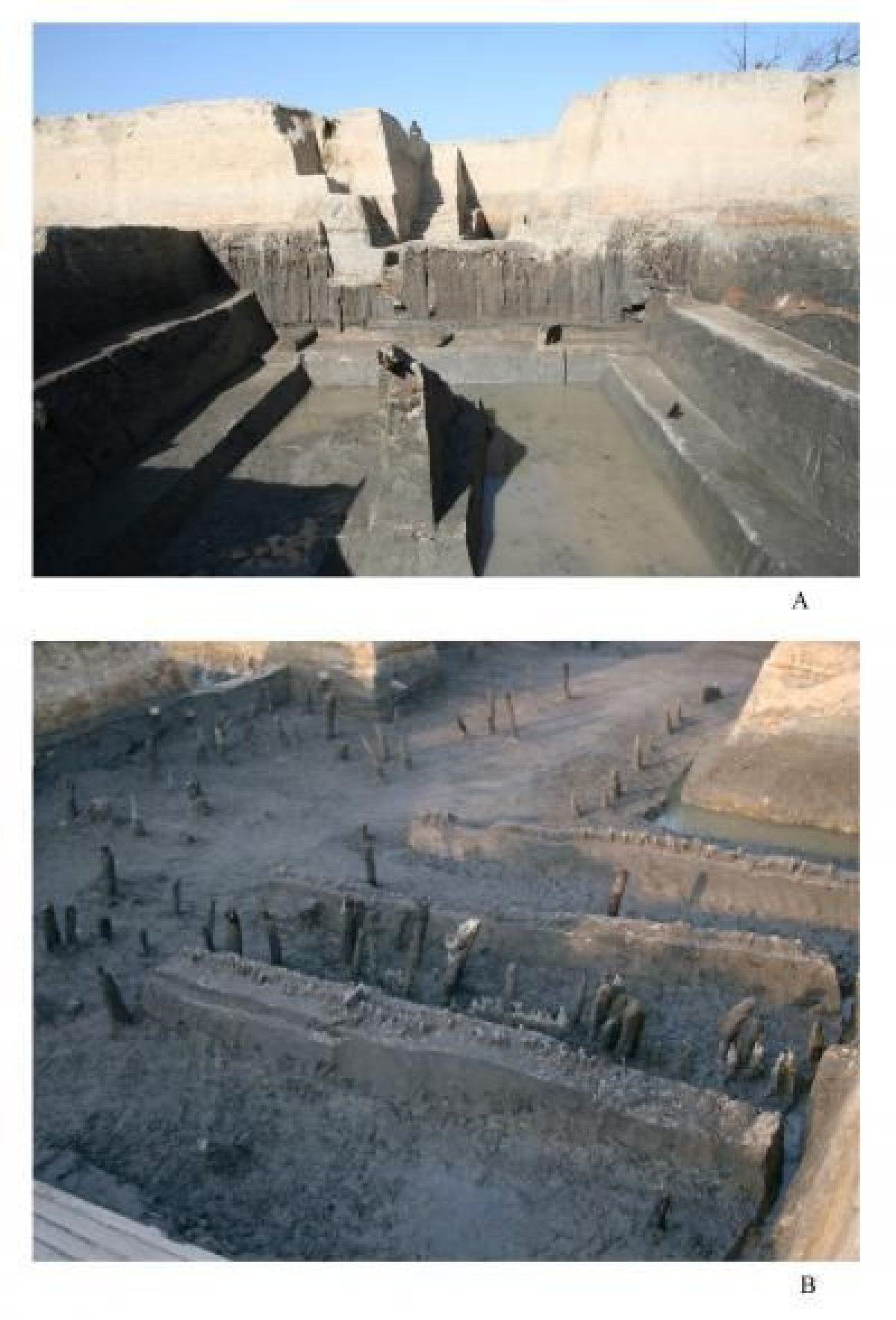
A recently excavated hydraulic system is rewriting the history of early Chinese engineering. Four years of research have revealed that the water management system of the Liangzhu, an agricultural Neolithic society known for their jade objects, took an estimated 3,000 people nearly a decade to build, and pushes back the date of China's earliest known large-scale water engineering project to about 5,100 years ago.
From 2009 to 2013, a team of researchers used a combination of archaeological samples, remote sensing data, geographic modeling, and satellite imagery to analyze how the Liangzhu people managed the water in the Yangtze Delta between 5300 B.C. and 4300 B.C. The delta, which drains into the east China Sea, was underwater up until about 7,000 years ago. (According to Forbes, it's currently poised to become a "megaregion" that already contains many of China's wealthiest cities and generates almost a quarter of the nation's GDP.)
The researchers traced a system of high dams, low dams, and levees that they propose represents one of the world's oldest and largest known hydraulic engineering projects. Previously, the oldest known comparable systems were Mesopotamian, from around 4,900 years ago. A paper describing the findings was published December 4 in the journal Proceedings of the National Academy of Sciences.
Corresponding author Yijie Zhuang, who researches Chinese archaeology at the University College London, told Newsweek over email that the dams were built surprisingly quickly given their sheer scale.

The Liangzhu society was agrarian, and the Yangtze Delta was its hub. The researchers estimate that the thousands of laborers moved more than 10 million cubic feet of earth to build the dams, in addition to what they describe in the paper as a network of artificial canals, ditches, and moats more than 18 miles long that supplemented the river's natural channels.
"The scale of landscape transformation at Liangzhu indeed was unparalleled in its era," the researchers wrote in their paper, "thereby opening a window into how such a system originated and developed largely in isolation."
By that they mean that the waterway system wasn't constructed in the service of some expanding empire, but primarily for the benefit of the city's own inhabitants. The network of canals allowed the Liangzhu to scale up their rice farmlands, which sustained their entire population.
Per the UNESCO World Heritage Center (WHC), the Liangzhu Ancient City is located in a wetland environment, and all six city gates discovered so far are waterway entrances, linking the water networks outside to the one within. The site is currently on the "tentative list" for UNESCO protection, based on a combination of political, economic, and religious importance, including the potential for "unearthed cultural relics" like jade artifacts, which were buried with members of the nobility. According to The Smithsonian's Museum of Asian Art, the quality of the Liangzhu's jade was "outstanding," and its use was copied by other Neolithic cultures that the Liangzhu came in contact with through China's river systems.
"[T]he remains including city walls, foundations of large architectures, tombs, altars, residences, docks and workshops imply existence of the largest ancient city of late Neolithic Age in the Yangtze River basin," reads the WHC case for registering the site for UNESCO protection.
Zhuang says he and his colleagues hope to pin down locations of the system's water-releasing outlets and figure out how the society managed its reservoirs. As The Smithsonian notes, the Liangzhu had no formal system of writing, so our understanding of them is limited; this hydraulic system is proving a vibrant source of insight into their culture.
Uncommon Knowledge
Newsweek is committed to challenging conventional wisdom and finding connections in the search for common ground.
Newsweek is committed to challenging conventional wisdom and finding connections in the search for common ground.
About the writer
Kastalia Medrano is a Manhattan-based journalist whose writing has appeared at outlets like Pacific Standard, VICE, National Geographic, the Paris Review Daily, ... Read more
To read how Newsweek uses AI as a newsroom tool, Click here.








